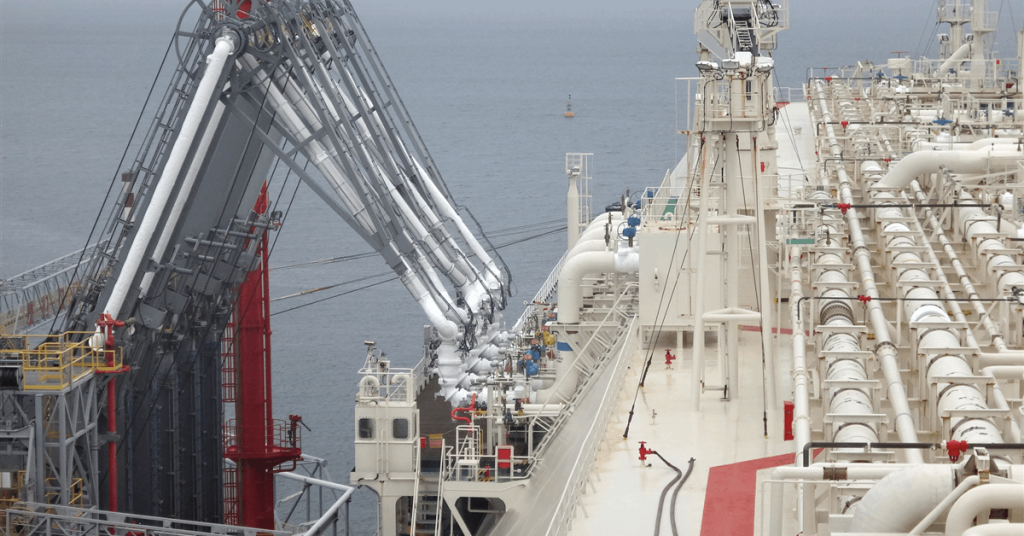Fluor Corporation said its joint venture with JGC Corporation has been awarded the contract to update the front-end engineering and design (FEED) for a proposed phase 2 expansion of the LNG Canada facility, located on the traditional territory of the Haisla Nation in Kitimat, British Columbia, Canada.
Financial details of the contract were not disclosed. Fluor said in a new release that it recognized the contract value in the second quarter.
The phase 2 expansion would increase the facility’s processing, storage, and shipping capabilities. LNG Canada and its five joint venture participants continue to assess the potential expansion but have not yet reached a final investment decision, Fluor said.
Located on Canada’s west coast, the LNG Canada facility has access to abundant, low-cost natural gas and an ice-free harbor. The plant has an annual production capacity of up to 14 million metric tons of liquefied natural gas (LNG) from two trains and “positions Canada as a major supplier of low-carbon natural gas to global markets,” the company said.
The facility will operate under a 40-year license, helping to reduce global greenhouse gas emissions by replacing coal with natural gas, according to the release.
“We’ve been a proud partner of LNG Canada through Phase 1 and we look forward to contributing to the next chapter in the construction of this world-class facility,” Mike Alexander, Fluor’s business group president of energy solutions, said. “We commend the LNG Canada team for its foresight and commitment to the energy transition by providing natural gas, a lower-carbon energy alternative, to global markets”.
The JGC-Fluor joint venture has been instrumental in delivering phase 1 of the project by providing critical engineering, procurement, fabrication management, construction, and commissioning services to build the facility since 2018, Fluor said.
The joint venture used an innovative modular fabrication approach to “achieve significant schedule efficiencies by allowing site preparation, early works and construction to occur at the same time as the module fabrication off-site,” Fluor said in an earlier statement.
Over 215 modules were delivered and set into place on the site from January 2022 to July 2023. The project also included the construction of the second largest LNG storage tank in the world, standing 184 feet (56 meters) high and 246 feet (75 meters) in diameter with a volume of over 7.9 million cubic feet (225,000 cubic meters), according to the statement.
Last week, LNG Canada loaded its first cargo of LNG for export, marking the start of Canada as an exporter of LNG.
According to LNG Canada, a phase 2 expansion may include the construction of two additional LNG trains, resulting in a total plant capacity of 28 million metric tons per annum.
Shell owns a 40 percent stake in LNG Canada through Shell Canada Energy. Malaysia’s state-owned Petroliam Nasional Bhd holds 25 percent through North Montney LNG LP. Japan’s Mitsubishi Corp. and China’s state-backed PetroChina Co. Ltd. each have 15 percent through Diamond LNG Canada Partnership and PetroChina Kitimat LNG Partnership respectively. Korea Gas Corp. owns five percent through Kogas Canada LNG Partnership.
To contact the author, email rocky.teodoro@rigzone.com
What do you think? We’d love to hear from you, join the conversation on the
Rigzone Energy Network.
The Rigzone Energy Network is a new social experience created for you and all energy professionals to Speak Up about our industry, share knowledge, connect with peers and industry insiders and engage in a professional community that will empower your career in energy.
element
var scriptTag = document.createElement(‘script’);
scriptTag.src = url;
scriptTag.async = true;
scriptTag.onload = implementationCode;
scriptTag.onreadystatechange = implementationCode;
location.appendChild(scriptTag);
};
var div = document.getElementById(‘rigzonelogo’);
div.innerHTML += ” +
‘‘ +
”;
var initJobSearch = function () {
//console.log(“call back”);
}
var addMetaPixel = function () {
if (-1 > -1 || -1 > -1) {
/*Meta Pixel Code*/
!function(f,b,e,v,n,t,s)
{if(f.fbq)return;n=f.fbq=function(){n.callMethod?
n.callMethod.apply(n,arguments):n.queue.push(arguments)};
if(!f._fbq)f._fbq=n;n.push=n;n.loaded=!0;n.version=’2.0′;
n.queue=[];t=b.createElement(e);t.async=!0;
t.src=v;s=b.getElementsByTagName(e)[0];
s.parentNode.insertBefore(t,s)}(window, document,’script’,
‘https://connect.facebook.net/en_US/fbevents.js’);
fbq(‘init’, ‘1517407191885185’);
fbq(‘track’, ‘PageView’);
/*End Meta Pixel Code*/
} else if (0 > -1 && 94 > -1)
{
/*Meta Pixel Code*/
!function(f,b,e,v,n,t,s)
{if(f.fbq)return;n=f.fbq=function(){n.callMethod?
n.callMethod.apply(n,arguments):n.queue.push(arguments)};
if(!f._fbq)f._fbq=n;n.push=n;n.loaded=!0;n.version=’2.0′;
n.queue=[];t=b.createElement(e);t.async=!0;
t.src=v;s=b.getElementsByTagName(e)[0];
s.parentNode.insertBefore(t,s)}(window, document,’script’,
‘https://connect.facebook.net/en_US/fbevents.js’);
fbq(‘init’, ‘1517407191885185’);
fbq(‘track’, ‘PageView’);
/*End Meta Pixel Code*/
}
}
// function gtmFunctionForLayout()
// {
//loadJS(“https://www.googletagmanager.com/gtag/js?id=G-K6ZDLWV6VX”, initJobSearch, document.body);
//}
// window.onload = (e => {
// setTimeout(
// function () {
// document.addEventListener(“DOMContentLoaded”, function () {
// // Select all anchor elements with class ‘ui-tabs-anchor’
// const anchors = document.querySelectorAll(‘a .ui-tabs-anchor’);
// // Loop through each anchor and remove the role attribute if it is set to “presentation”
// anchors.forEach(anchor => {
// if (anchor.getAttribute(‘role’) === ‘presentation’) {
// anchor.removeAttribute(‘role’);
// }
// });
// });
// }
// , 200);
//});

